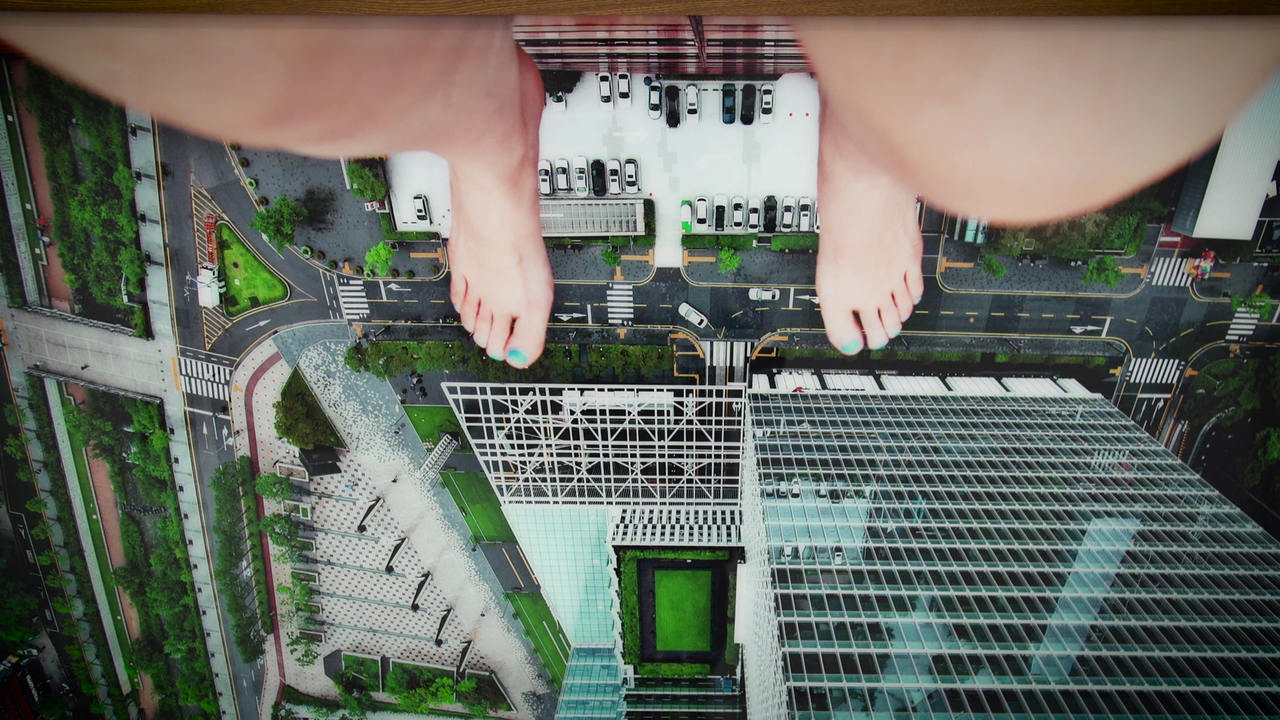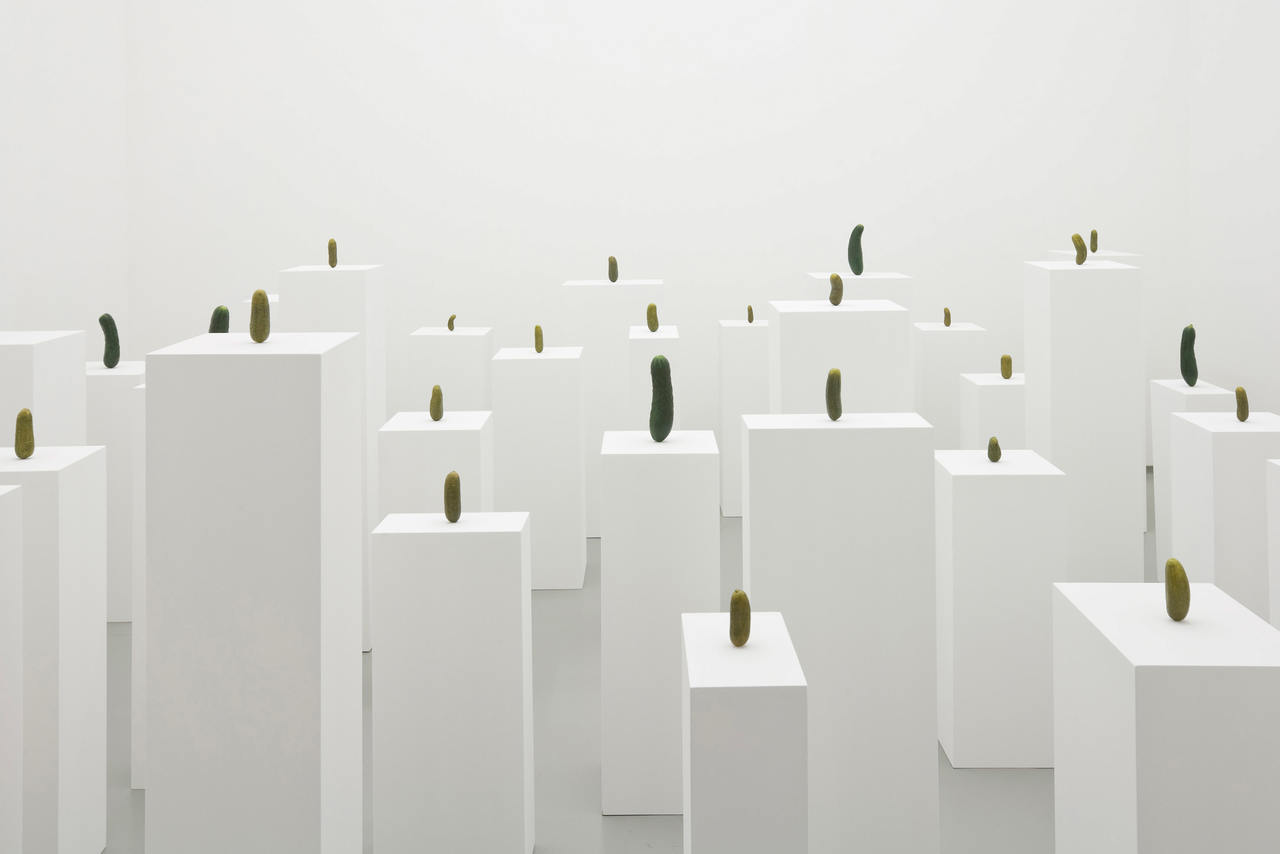Hamburg-based artist Thorsten Brinkmann creates self-portraits in series – in which his face remains constantly hidden.
From a large box two upright plastic legs protrude clad in the shabby clothes of artist Thorsten Brinkmann. The Adidas logo of the tatty sneakers subtly corresponds to three strips of tape that adorn the brown cardboard box. The closing flaps that stick out from the sides appear touchingly whimsical – a bit like the flippers of a penguin.
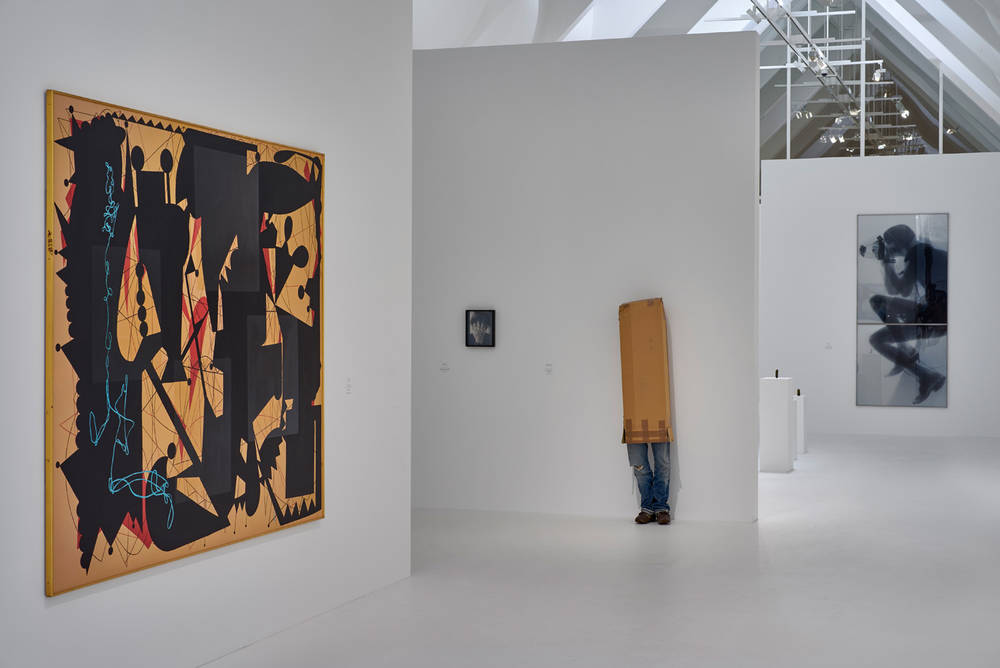
The work is so true to life that it is as if a muffled voice would answer if you were to tap the piece good-naturedly. But you need to call Hamburg Bahrenfeld, where Brinkmann has his studio, to talk to him about this sculpture, which is on display in the SCHIRN’s "ME" exhibition until May 29. His representative in the exhibition hall of course remains silent.
Running towards the wall with a box over the head
“The box originally contained a delivery of photo paper,” explains Brinkmann on the telephone. It was spared the usual fate of being cast into the recycling bin. At the beginning of the Noughties Brinkmann shot “Gut Ding will es so” (which roughly translates as “Good things want it this way”) – a video that runs a little faster than normal speed and is full of slapstick moments. “The film is about how I handle things, or more precisely: how things handle me. Again and again I run towards the wall with the box over my head,” says Brinkmann.
At the end of the Nineties he moved to Hamburg in order to study under photographer and performance artist Bernhard Blume at the University of Fine Arts. With the help of the box, in 2006 Brinkmann created his “self-portrait”, which is part of a series of around ten similar leg sculptures – all of them comparatively minimalist preliminary studies for the far more opulent, colourful, eccentric “Portraits of a Serial Collector”, with which he came to international fame just a short time later.
Poses that range from dignified to conceited
In all his portraits, Brinkmann is always masked and clothed to the point of unrecognizability. We never see his face. His photographs can be considered a corruption of classic portrait photography. “Of course, part of what I aim to do is sabotage icons,” admits Brinkmann with remarkable frankness. Before his camera’s delayed-action shutter release, he strikes poses that range from dignified to conceited, that are in stark contrast with the shabby clothing he wears for the shooting. They are likewise in contrast with the objects, such as battered coal buckets, lampshades or flower tubs that he puts over his head – found objects Brinkmann has come across at flea markets or has salvaged while strolling through Hamburg.
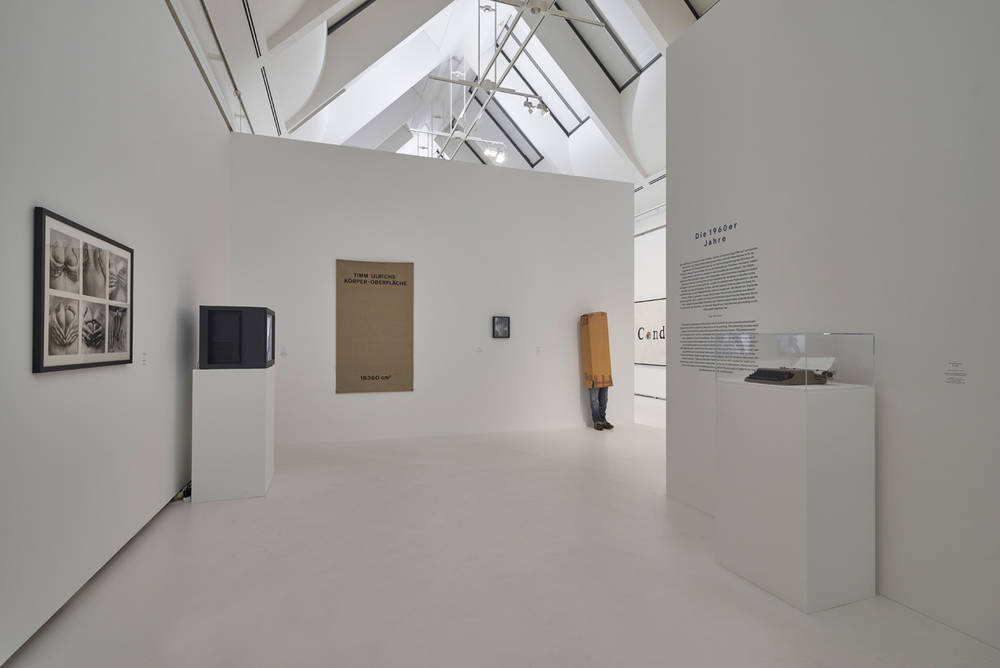

Thorsten Brinkmann, Basini, 2014, © Thorsten Brinkmann / VG Bildkunst Bonn 2016, Courtesy Gallery Feldbuschwiesner Berlin, Gallery Mathias Güntner, Hamburg, Image via nytimes.com
Brinkmann has a huge collection of finds from which he draws the material not only for portraits, but also for surreal-seeming still-lifes and expansive installations. “In my portraits, these things work like expressional prostheses. They function partly as masks onto which a physiognomy is transferred, and convey feelings, very similarly to a human face.“
Brinkmann wanted to do things differently
With his art, Brinkmann acts at the point where photography, painting, sculpture and performance intersect. “I have spent a lot of time studying the performance artists of the 1970s,” he explains. “As much as I admire people like Marina Abramowić, Urs Lüthi or Jürgen Klauke, I always have a problem with the fact that these artistic personalities are so overly present in their works. Essentially, with them it is virtually impossible to differentiate between author and work,” Brinkmann explains. “My physiognomy should not be inextricably linked to my work.” Brinkmann wanted to do things differently, to show himself in the work, without really being visible.
While in Europe Brinkmann’s artistic game of hide-and-seek is often interpreted as a take on art history heavy in quotations, about which one can enjoy a good laugh, in the USA the faceless figures aroused fear in their observers. “A few years ago my portraits were exhibited in the International Center of Photography in New York. With some photos the observers felt reminded of terrorism or S&M practices.”
Daylight, a few objects and a camera
Last December and January Brinkmann spent three weeks of each of the two months in Houston, where the Rice Museum is currently exhibiting his works. During his stay, he produced more “Portraits of a Serial Collector”. Brinkmann found the material for this at a junk yard. “Now and again it’s important to leave the studio. After all, art can emerge anywhere,” he says. “Sometimes students tell me that they want to put their projects on ice because they have to save a bit first.” But Brinkmann doesn’t want to be dependent on expensive equipment: “Daylight, a few objects and a camera – that’s all I need for my art.”
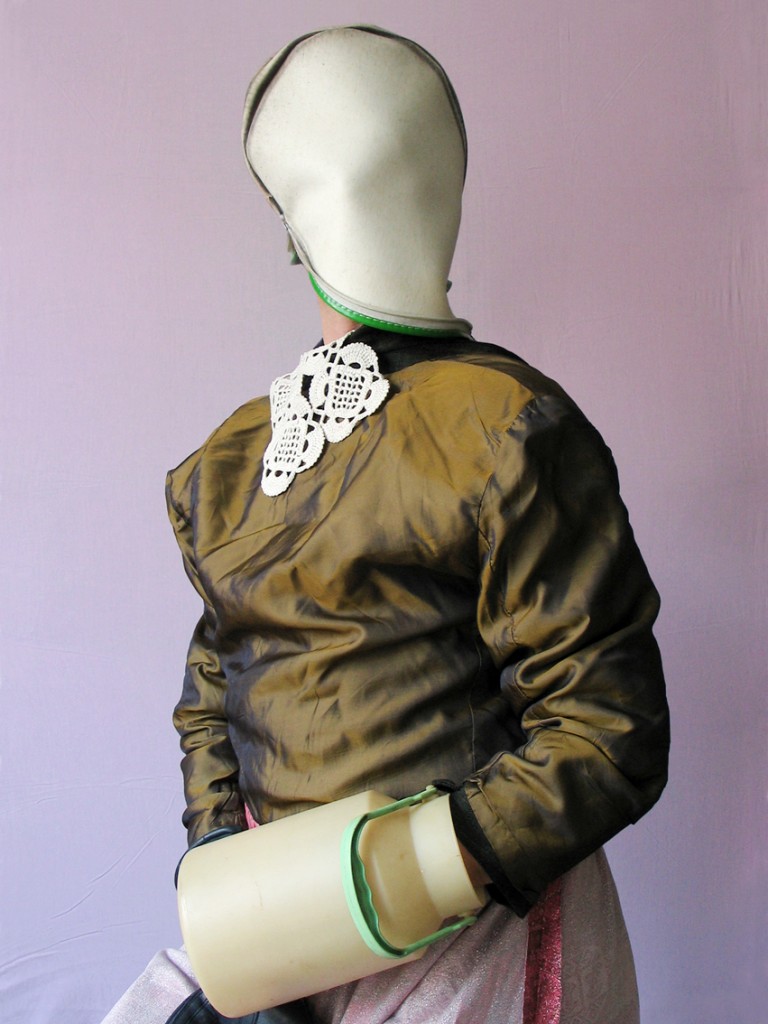
Thorsten Brinkmann, Milkymaid, 2009, © Thorsten Brinkmann / VG Bildkunst Bonn 2016, Courtesy Gallery Feldbuschwiesner Berlin, Gallery Mathias Güntner, Hamburg, Image via thorstenbrinkmann.com
